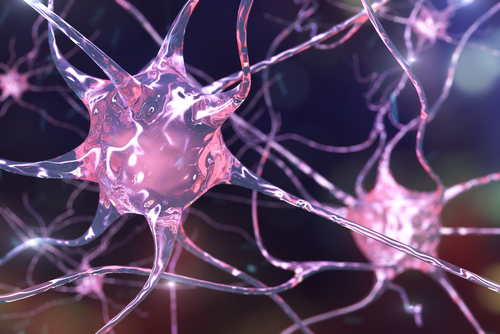Calcium Channels May Be Therapeutic Target in Parkinson’s, Stem Cell Study Suggests

Targeting specific calcium channels in dopamine-producing neurons may be a therapeutic target for Parkinson’s disease, according to research involving cells derived from Parkinson’s patients.
The study, “T-type calcium channels determine the vulnerability of dopaminergic neurons to mitochondrial stress in familial Parkinson’s disease,” was published in Stem Cell Reports.
For most Parkinson’s patients, symptoms are idiopathic, or of unknown cause, making it difficult to understand the relationship between various factors that may cause disease. However, roughly 10% of patients show the familial incidence of Parkinson’s disease, which allows researchers to study the underlying mechanisms of disease in these patients, helping them understand common causes in all patients, as well as unravel potential therapeutic targets.
Prior generation of induced pluripotent stem cells (iPSCs) from patients with familial Parkinson’s successfully replicated the disease processes. iPSCs are derived from either skin or blood cells that have been reprogrammed back into a stem cell-like state, which allows for the development of an unlimited source of any type of human cell needed for therapeutic purposes.
Aiming to provide iPSCs-based ways to treat neurological diseases, Keio University School of Medicine and Eisai started a collaboration in 2013. Their joint research led to the generation of dopamine-producing neurons — progressively degenerated in Parkinson’s, leading to its motor symptoms — from familial Parkinson’s patients’-derived iPSC.
They also established a drug library of more than 1,000 existing compounds to screen treatment candidates.
The study, partially funded by Eisai, used neural progenitor cells, which differentiate into brain cells, including neurons, derived from two familial Parkinson’s disease patients with mutations in the PRKN gene (PARK2 type). PRKN is the most commonly implicated gene in young-onset Parkinson’s disease.
“The current procedure is more advanced in terms of simplicity and robustness for neuronal differentiation, enabling us to perform screening without complicated work,” researchers noted.
The approach enabled the efficient generation of dopamine-producing neurons in vitro, which, compared to healthy neurons, had reduced size of projections, as well as increased oxidative stress and apoptosis, or “programmed” cell death, as opposed to cell death caused by injury.
Oxidative stress is an imbalance between the production of free radicals and the ability of cells to detoxify them. These free radicals, or reactive oxygen species, are harmful to cells and are associated with a number of diseases, including Parkinson’s.
Gene editing in iPSCs to create similar mutations led to the same disease-related alterations.
Researchers also found that Parkinson’s-derived neurons were more susceptible to mitochondrial stress induced by rotenone, an agrochemical that acts as a mitochondrial inhibitor. Mitochondria are small cellular organelles that provide energy and are known as cells’ “powerhouses”.
Screening their library enabled the identification of several compounds able to suppress rotenone-induced apoptosis, particularly T-type calcium channel blockers benidipine (used for the treatment of blood pressure) and ML218.
These particular calcium channels are present in many neuronal cells within the central nervous system. They help mediate calcium influx into neurons after passing electrical impulses to communicate among themselves.
These blockers also were able to lower stress-induced apoptosis in dopamine-producing neurons derived from patients with a different type of familial Parkinson’s (PARK6), caused by a mutation in the PINK1 gene. These neurons also had higher levels of T-type calcium channels.
“These findings suggest that calcium homeostasis in [dopamine-producing] neurons might be a useful target for developing new drugs for [Parkinson’s] patients,” researchers wrote.
“In summary, we have established a robust platform to model [Parkinson’s] in a dish and revealed an additional layer of the pathogenesis of PD, offering a potential therapeutic target,” they added.
Future work will use experimental approaches to model the brain in vivo and to have different types of brain cells in the same dish with the goal of validating these therapeutic targets.
Of note, six of the study’s authors are employees at Eisai.






